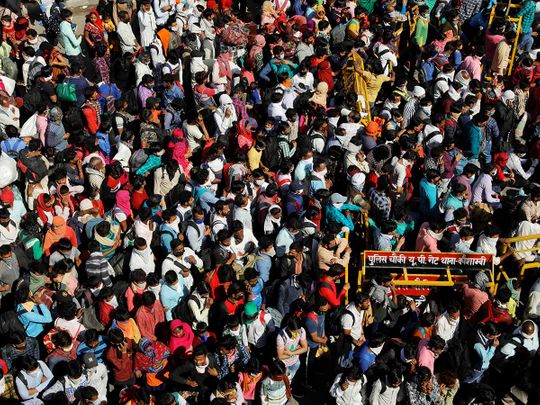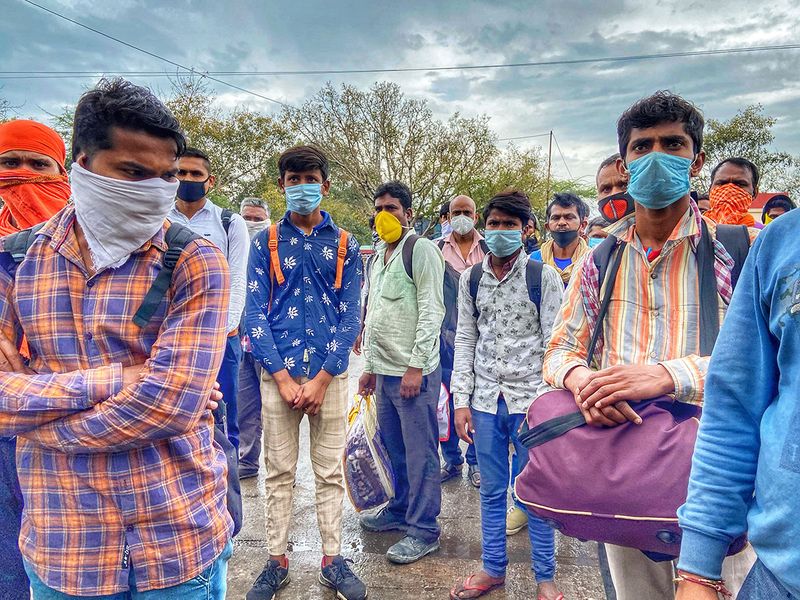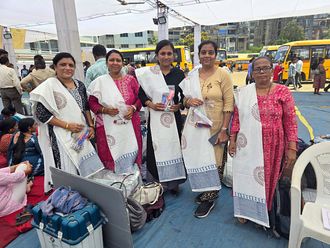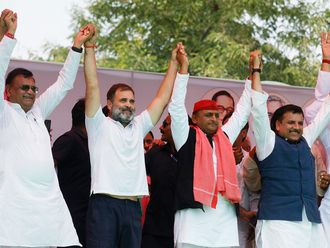
India’s coronavirus problem found itself compounded on Saturday, and the complications had little to do directly with the virus. It had everything to do with panic and poverty which, feeding on each other, presented India with a potentially lethal permutation — one the affluent Western world did not have to contend with in their campaign against COVID-19.
Hundreds of thousands of daily wage earners, primarily in the construction sector, began their trek toward their villages as far as a thousand kilometres away from Delhi to Uttar Pradesh, Madhya Pradesh, Rajasthan, and Bihar, and converged, bees to a hive, luggage on their backs and babies on their shoulders, to the borders, and at Delhi’s Inter-State Bus Terminal.
Despite the fact they were disciplined — long queues, no fights — the expedition was against the curfew that the government had put in place to fight the contagion.
COVID-19 is a rich man’s disease: the air-traveller is its favourite postman. But as ever, the poor are likely to suffer and die in greater numbers, not because they have fallen sick, but because they are poor
In a sharp spike, India reported 135 corona positive cases on Saturday taking the number of confirmed cases so far to over a thousand, with 30 dead. Since the virus spreads exponentially, India, as it concludes its first week of a nationwide lockdown, is possibly looking at an astronomical number of COVID patients in the very near future, which might well be, alas, today.
Prime Minister Narendra Modi addressed the nation twice in a space of five days, warning of hardship and asking people to be disciplined. The nation complied. Unfortunately, he was addressing that part of India which could afford to stay at home temporarily, and stock up.
No one seemed to think of the workers in unorganised sectors, totalling in Delhi 13 million, according to one estimate, though the Finance Minister Nirmala Sitharaman had announced a package of measures, including direct cash disbursement, worth Rs1.7 trillion. What the minister did not make clear was the mechanism of the disbursement.
On Sunday, I ran into a scattered group of workers, including women and kids, making their way through the fields filled up to build huge apartment blocks, walking with quick steps to their homes in Jaunpur, in Uttar Pradesh, as if their village was next door. It was over 1,000 kilometres away. How long will this take, I asked.

A month, one of them said. It was not clear how they would sustain themselves on the Great March, since Partition. Nor where they would rest at night. The furnace-like North Indian summer has not yet taken off yet. So, for the moment, the heat would be tolerable. But in a week or so that would change, and these men and women would be easy fodder for the sun.
They wore open sandals, and they hoped drinking water could be had on the way. They seemed to trust more in god than in Modi. In a previous era, they could well be mendicants. Used to backbreaking work every day, the sudden quiet of the building sites and the silenced bulldozers had unnerved them.
They lived in chaos and dust and sweat. But there was some money at the end of the day. Now there was sweat. And no money. They were not aware of the package that the Government had announced so kindly yet grandly: those things happened beyond their touch, as if in another world wrapped in muslin. In any case, they had no bank accounts, they said. Who was going to give them money? How? When?
It is not likely these and similar groups going home will complete their mission. A few years ago, in the first flush of the Modi victory in 2014, the BJP had announced a Ghar Wapsi (Come Back Home) movement for Muslims. The idea was that originally all Muslims in India were Hindu and that they were now being given a chance to return to the fold.

The movement petered out in the face of violence and criticism. But the real Ghar Wapsi movement seems to be the one set off by the virus last week. And it appears more complicated in its potential for social and financial damages.
Those who made it to their villages (the government has since deployed buses for their travel, but it is not clear if the confusion could be contained) would be exhausted physically and financially.
Assuming the real estate industry, for years down in the dump — mostly because of corruption and siphoning off funds by the builders — somehow managed to swing back in three to six months, their workers having reached home would think twice before starting out again. That means another crisis for a key sector.
The demographic movement that the virus has revealed could still be brought under control. If trains and buses are turned into dispensaries and wayside schools are converted into temporary shelters, food and money efficiently distributed, the reverse flow of people, from cities to villages, could be minimised, the possibility of infection carried to the countryside reduced.
In Italy, Spain, or the US, where the coronarivus has taken a toll, migrant workers were not a part of the problem. India, within its limitations, has done a good job so far to contain the contagion with 30 deaths.
But if the hundreds if thousands milling at the Delhi borders and the scattered hoards picking their way through the backfields toward distant homes are any indication, India is treading an uncertain terrain strewn with mines, and spawned by the virus.
COVID-19 is a rich man’s disease: the air-traveller is its favourite postman. But as ever, the poor are likely to suffer and die in greater numbers, not because they have fallen sick, but because they are poor.
— C.P. Surendran is a senior journalist based in India








